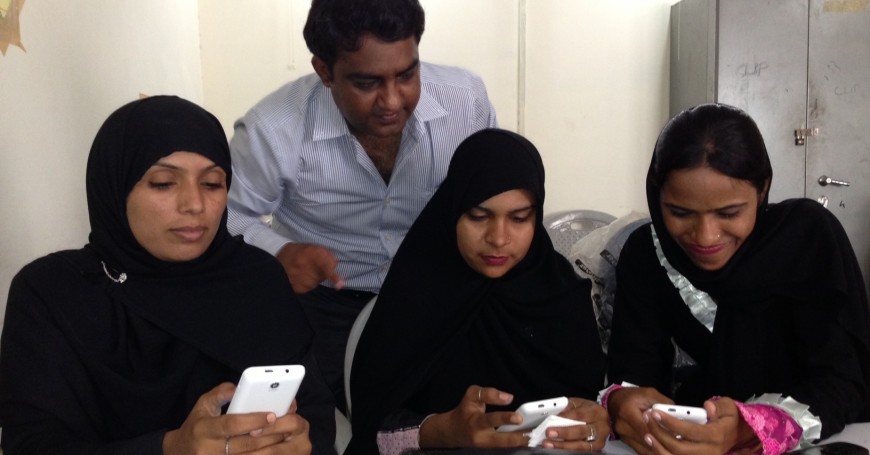
BACKGROUND
In March 2011, Saving Lives At Birth: A Grand Challenge for Development (sponsored by USAID, Government of Norway, Bill & Melinda Gates Foundation, Grand Challenges Canada and the World Bank) launched a programme to find innovative prevention and treatment ideas for pregnant mothers and newborns in low resource settings.
Mark Ansermino and Peter von Dadelszen were awarded funding through this initiative for the project entitled “PIERS On the Move: Pre-eclampsia Integrated Estimate of RiSk Assessment on a Mobile Phone” on behalf of a team at the University of British Columbia in Pediatric Anesthesiology and Electrical and Computer Engineering, and their colleagues at Stellenbosch University, South Africa.
GOAL
The objective was to develop the PIERS on the Move (POM) mobile health application, a portable, low-cost device that rapidly and reliably identifies women and babies at increased risk of adverse outcomes from pre-eclampsia.
This technological solution integrates two successful innovations: the PIERS clinical risk prediction model and the Phone Oximeter, to overcome the barriers produced by insufficient training, distances to healthcare facilities and unavailability of resources in LMICs. The prediction of adverse maternal outcomes in pre-eclampsia is based on symptoms and clinical signs, including a low blood oxygen saturation level that can be measured with the Phone Oximeter.
PROGRESS TO DATE
The clinical validation study for the decision algorithm used in the POM app was completed at Tygerberg Hospital in Cape Town, South Africa in early 2014. In this clinical study, our objective was to determine if the POM tool correctly identifies women who are at high and low risk of adverse maternal outcomes due to pre-eclampsia. Women deemed at high risk were those that went on to develop one or more components of the miniPIERS adverse maternal outcomes. During this study the PIERS clinical risk prediction model was recalibrated and updated to include measurement of blood oxygen saturation using the Phone Oximeter. This work has now been published in the Journal of Obstetrics and Gynaecology Canada.
During the clinical study, POM team members travelled to Frere Maternity Hospital in East London, South Africa in January 2013 to conduct a final round of usability testing with midwives and nurses. This successful trip completed data collection with over 20 subjects with great feedback from the users to enable the software team to further refine the application.
A new simplified version of POM was created for the CLIP Definitive trial based partly on this user feedback. Multiple rounds of mockups and prototype applications were sent to the CLIP countries for feedback during the modification of the original POM application to be used by the cHCPs in the CLIP Definitive trial.
ANTICIPATED DELIVERABLES
Data collection through the first POM seed grant project was concluded in November 2013. Two manuscripts resulting from this activity have now been published. The first manuscript details results of the usability testing of the POM app with midwives in South Africa. The second publication describes the impact of inclusion of pulse oximetry as a novel biomarker in the miniPIERS model.
As a result of successful application for additional funding through Round 4 of the Saving Lives at Birth grant competition, continuation of this important work has been possible. Ongoing next steps include development of prediction models to better define maternal risk due to postpartum hemorrhage and obstetric sepsis along with defining childhood risks through development of prediction models for pneumonia and other common causes of neonatal death and stillbirth. This work will be possible through partnership with the Aga Khan Development Network